Why is My Snake Plant Turning Yellow? Here’s the Fix
Snake plant leaves are susceptible to yellowing if the plant is not well cared for. The yellowing usually signifies something is wrong with the watering and other care practices.
What causes the yellowing, and how do I fix it?
When a snake plant turns yellow, the problem is usually overwatering, poor soil drainage, mineral imbalance, and low temperatures. Repotting the plant in a fast-draining soil mix, cutting down on watering, and maintaining indoor temperatures between 70-90 °F will fix the problem.
Why is my snake plant turning yellow?

Healthy snake plants have a yellow coloring around the edges of their broad, vertical leaf blades. However, when shades of yellow are visible across the entire surface of the leaf blades it is a sign of some problems in the snake plant, generally plant stress caused by several factors.
Here are the reasons why your snake plant is turning yellow:
Overwatering
Snake plants are succulents that readily draw in soil water and store it in the leaf cells. Overwatering leads to excess moisture in the soil, making the plant cells take in more water than they can hold.
As the leaf cells absorb more water, the leaves become soggy and start to turn yellow. The soaked-up leaf cells also lose their firmness, causing the snake plant leaves to droop. If overwatering in snake plants is not corrected, the yellow patches of your mother-in-law’s tongue plant will turn dark brown or black.
To rule out any other causes of snake plant leaf yellowing, remove the plant from its pot and inspect the roots to see if they’re soggy and have a foul smell. Root rot and leaf yellowing in Sansevieria usually manifest at the same time.
Compacted soil that retains water
Poor draining soil can cause yellowing on your snake plant even if you don’t water them regularly. Compact soil that retains water for too long causes Sansevieria to take in more water than it needs.
Even with a properly spaced-out irrigation schedule, your snake plant may still spot signs of overwatering due to poorly draining soil.
An excellent example of slow-draining soil that could trigger this problem is a potting soil mix that contains compost and sphagnum peat. Meanwhile, a growing pot lacking drainage holes at the bottom will also cause excessive soil moisture levels, leading to leaf yellowing.
Temperatures below 45°F
Sansevieria trifasciata are native arid and semi-arid plants. They thrive in moderately high temperatures of 70-90 degrees Fahrenheit.
When temperatures drop below 45-degrees Fahrenheit for a sustained period, the plant becomes stressed, and leaf yellowing occurs. That’s why indoor snake plants kept near cold, drafty windows are highly susceptible to leaf yellowing caused by extremely low temperatures.
Iron deficiency in the soil
Mineral imbalance within plant cells is another uncommon cause for the yellowing of snake plants. It occurs when essential minerals like iron are depleted within the soil in which the snake plant grows.
The mineral deficiency triggers the onset of chlorosis, which manifests when the leaves of your Sansevieria trifasciata plant lose their green pigment and start to appear pale yellow in color.
Root rot fungi
Various soil-borne fungi and pseudo-fungal organisms like Fusarium and pythium thrive in soggy soil conditions. They cause the snake plant’s roots to rot, affecting nutrient and water absorption.
As the snake plant stresses due to moisture and nutrient deficiency, leaf discoloration occurs, and yellow spots appear on the leaf blades.
You can ascertain that root rot fungi cause leaf yellowing by unpotting your Sensivieria plant and checking the roots. Rotten snake plant roots feel soft, soggy, and produce a foul odor.
Overexposure to bright & direct sunlight
Sansevieria trifasciata leaves may also have yellow discoloration if exposed to bright direct sunlight for too long. It is expected during the summer months when the sun’s scorching rays turn the exposed snake plant leaves to a pale-yellow shade. The mother in law’s tongue’s leaves will also start to curl and wrinkle up if the heat is too much.
The leaf variegation and natural patterning fade on a snake plant exposed to bright and direct sunlight. Meanwhile, only the leaves facing the window will turn yellow for indoor snake plants if photodamage is the issue.
Over-fertilizing during winter
Roots have a higher probability of burning when there is excess fertilizer and nutrients in the soil. This then hampers the intake of water and essential nutrients, causing the mother-in-law’s tongue plant to stress and spot yellow leaves.
High concentrations of nutrients in the soil also enhance the sensitivity of snake plants to freezing temperature conditions. As such, if you overfeed your plant with fertilizer during winter, its leaves are more likely to spot yellow patches. Young snake plants with fragile roots, or those that have been recently repotted, are also susceptible to leaf yellowing caused by overfeeding.
How to Save a Yellowing Snake Plant
You can save your yellowing snake plant by repotting using a well-draining soil mix, watering only when the soil dries up, and providing optimal temperature and light conditions. Provide an iron supplement and drain any excess salts from the soil to save and revive your snake plant.
Here’s how to save a snake plant that’s turning yellow:
1. Water when the soil dries up
Stop irrigating your snake plant until the soil dries up entirely if the yellowing is due to overwatering. Resume watering, but not more than once per week. As a rule of thumb, avoid watering your snake plant until the top two inches of the soil feel dry.
Meanwhile, if you have slow-draining soil, water your snake plant early in the morning. This will help to boost drainage rates, considering the high temperature and sunlight conditions during the day.
2. Repot the plant with a fast draining soil mix
Proper drainage entails using a fast-draining soil mix and a growing pot with drainage holes at the base. It is best to use a soil mix that contains perlite and coarse sand for fast drainage.
Before repotting your snake plant in a new soil mix, prune off any rotten roots and yellow leaves to enhance the plant’s chances of survival. Meanwhile, if you’re growing your snake plant in your outdoor garden, rake away any mulching present before spreading coarse sand over the garden soil to improve drainage.
3. Maintain temperatures between 70-90°F
If you’re growing your Sansevieria inside a greenhouse, keep the temperature levels between 70-90 degrees Fahrenheit. Meanwhile, for indoor snake plants, keep them away from areas where they’re vulnerable to cold drafts. This includes moving them a bit further away from windows, doorways, and AC vents.
4. Install window drapes to filter direct sunlight
Installing drapes on windows ensures that your indoor snake plants receive bright but indirect sunlight. Meanwhile, for outdoor snake plants that are yellowing from sunlight overexposure, plant a taller shrub/tree close by to shield them from direct sunlight exposure.
5. Repot in a cactus soil mix
If your snake plant leaves are yellowing due to mineral deficiency in the soil, replace the regular soil with a succulent/cactus soil mix. Specially formulated potting soil mixes are rich in minerals that Sansevieria trifasciata requires to ward off chlorosis. You can order Succulent soil mixes on online marketplaces such as Amazon.
6. Treat the soil with a fungicide
Various commercial fungicides are effective in killing root rot fungi. Hydrogen peroxide is an even better alternative, as it kills numerous types of soil-borne pathogens that lead to root rot.
7. Drain the excess salts out of the soil
Snake plants need more nutrients during the growing season when temperatures are high, but not during winter. Ensure that you don’t fertilize before winter when temperatures are low, and the plant’s roots are more sensitive to excess fertilizer salts in the soil. If you’ve already made this mistake, leech excess salts out of the snake plant’s root zone by lightly watering the soil mix.
Should I remove yellow leaves from snake plant?
You can cut yellow leaf tips off the affected leaves of your snake plants. Combined with a proper watering schedule, optimal light, and temperature conditions, the pruned leaves should be able to grow longer again. Remember that they will not regrow the pointed tips, making them stand out from the rest of the leaves.
If you consider this to be an aesthetic problem, consider pruning off the yellow edges into pointed tips. As the leaves regrow, they’ll look more like the rest of the healthy leaves. Alternatively, you can trim off the affected leaves at the base.
Can yellow snake plant leaves turn green again?
Your snake plant can turn green again after you make adjustments to your watering schedule, sunlight, temperature conditions. However, it may be too late to save the snake plant if the yellowing is at an advanced stage due to severe root rot. There’s a silver lining as you can grow new plants by propagating the few remaining leaves that are still healthy.
References
- R.W. Henley, A.R. Chase & L.S. Osborne, University of Florida, IFAS Central Florida Research and Education Center: Sansevieria Production Guide
- Julissa Rojas-Sandoval & Pedro Acevedo-Rodríguez, Department of Botany-Smithsonian NMNH, CABI: Sansevieria trifasciata (mother-in-law’s tongue)


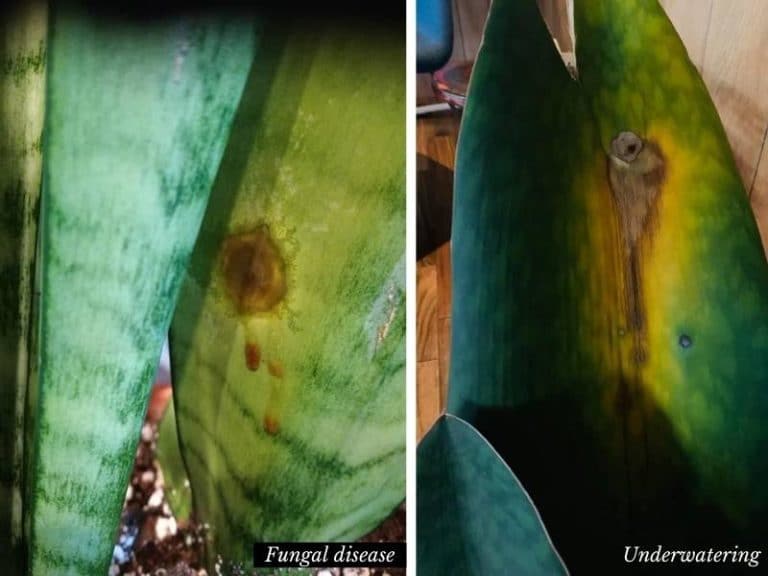
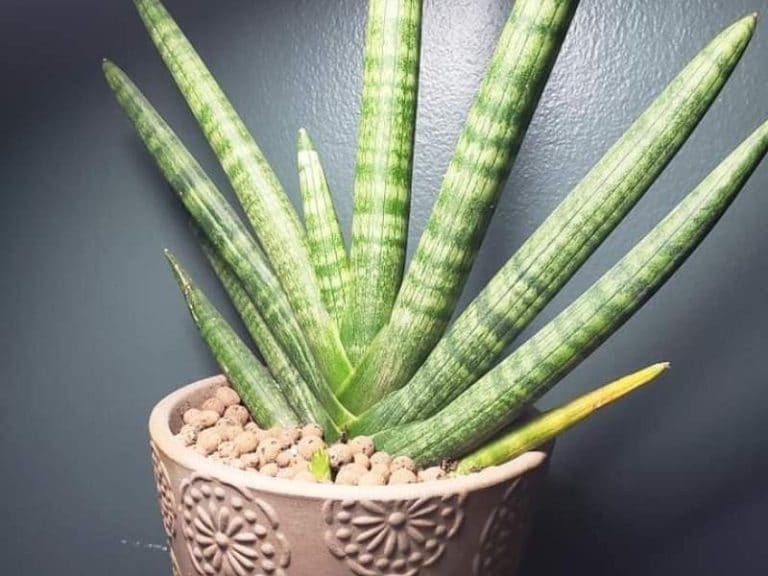
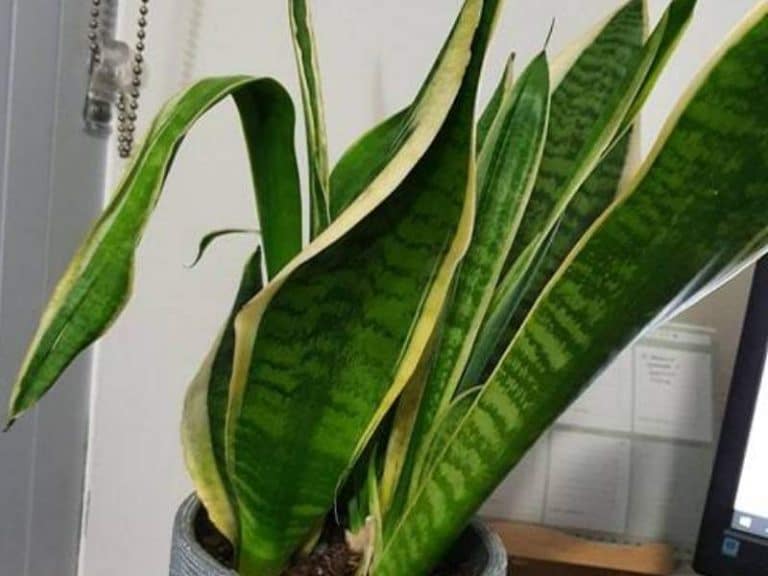
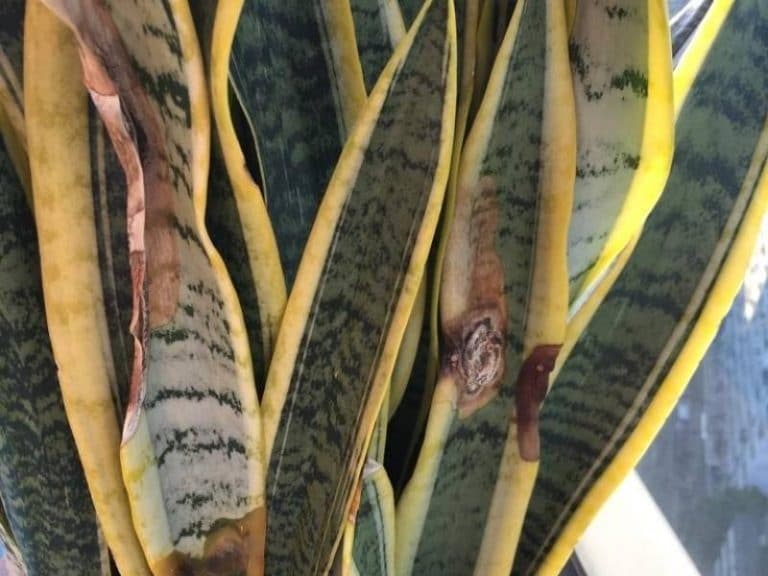
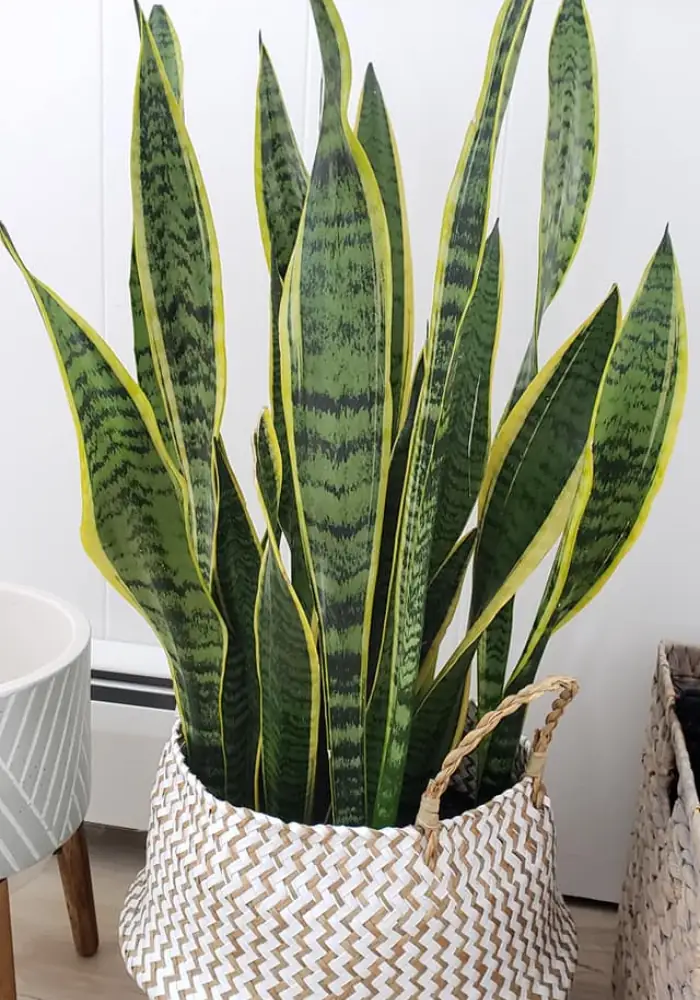

I have had to re-pot one of my snake plants and yesterday was the 3rd time because some of the leaves were turning yellow and wrinkled now that I have checked on the plant there is another leaf turning yellow and wrinkling. I know I’m not overwatering it and I check the roots and there is no root rot in the roots, so I don’t know what the hell I’m doing wrong. I have even sprayed the plant with fungicides and pesticides made from oils kind of like neem oil.